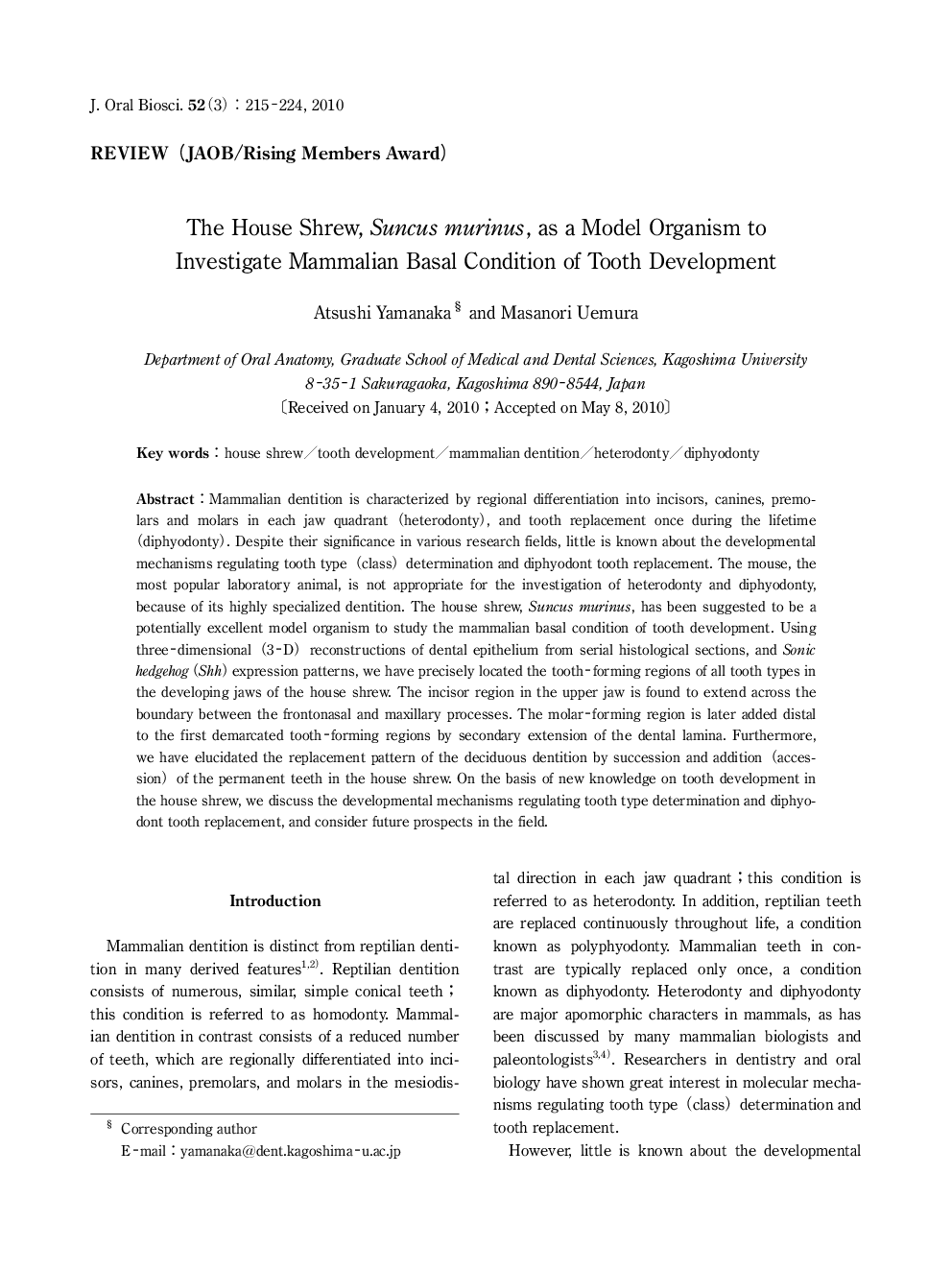| Article ID | Journal | Published Year | Pages | File Type |
|---|---|---|---|---|
| 2777016 | Journal of Oral Biosciences | 2010 | 10 Pages |
Mammalian dentition is characterized by regional differentiation into incisors, canines, premolars and molars in each jaw quadrant (heterodonty), and tooth replacement once during the lifetime (diphyodonty). Despite their significance in various research fields, little is known about the developmental mechanisms regulating tooth type (class) determination and diphyodont tooth replacement. The mouse, the most popular laboratory animal, is not appropriate for the investigation of heterodonty and diphyodonty, because of its highly specialized dentition. The house shrew, Suncus murinus, has been suggested to be a potentially excellent model organism to study the mammalian basal condition of tooth development. Using three-dimensional (3-D) reconstructions of dental epithelium from serial histological sections, and Sonic hedgehog (Shh) expression patterns, we have precisely located the tooth-forming regions of all tooth types in the developing jaws of the house shrew. The incisor region in the upper jaw is found to extend across the boundary between the frontonasal and maxillary processes. The molar-forming region is later added distal to the first demarcated tooth-forming regions by secondary extension of the dental lamina. Furthermore, we have elucidated the replacement pattern of the deciduous dentition by succession and addition (accession) of the permanent teeth in the house shrew. On the basis of new knowledge on tooth development in the house shrew, we discuss the developmental mechanisms regulating tooth type determination and diphyodont tooth replacement, and consider future prospects in the field.
